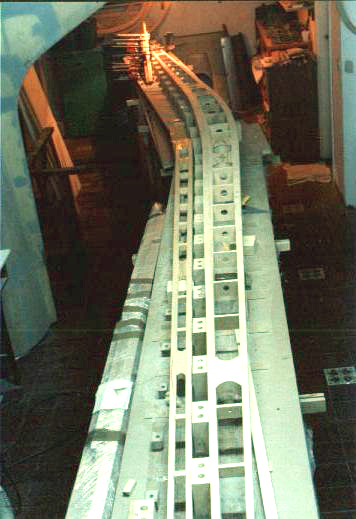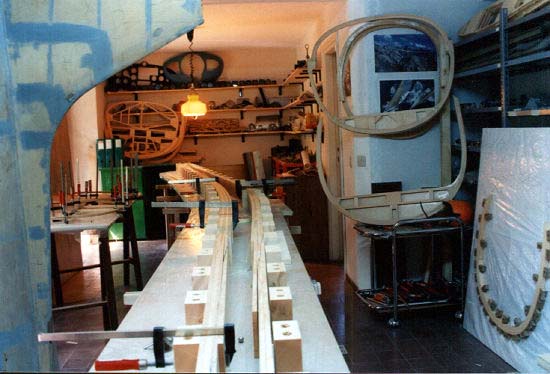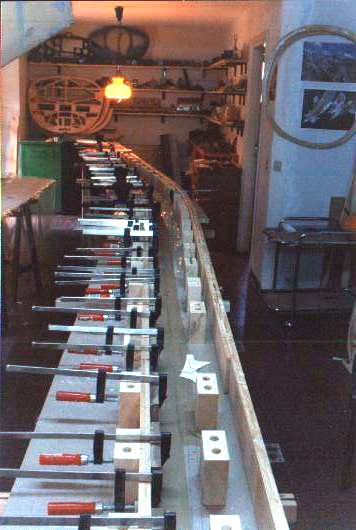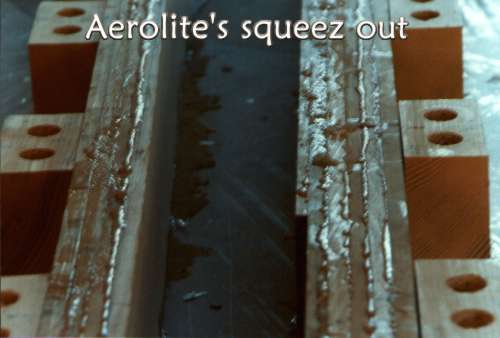This is
the way we used the table.A lot of clamping , isn't it?
The upper
boom is under gluing up while the lower one is finished.
It's not
such a difficult work when you have a perfect table and you work under
18° C if you're using Aerolite; Clamping time is very short and
you risk not to do a bad gluing.
The completion
of the jig took 80 hours of working and checking time.(we checked everything
three times).Preparation of the wood for the lamination was well made
, controlling the grain , scarfing the wood, drawing the dimension
both in the jig and in the future boom, and drawing also all the references
for a fast gluing up.
After this
kind of preparation, we found the real gluing easier than the
laminations for the frames. We glued one lamination per time, starting
obviously with two layers in the lower spar boom since there is one
joint between them.
With the watch in the hand and in 4 people
we firstly took 8 minutes to clamp everything using masked blocks
between the wood and the head of the clamp to protect the spruce. Then
getting experienced in one week-end in two we glued all the upper spar
boom, and it took us about 7 minutes per lamination. The system that
proved to be better was to start from one side to clamp in position
the side spruce layer, then joining the scarf with the middle
layer, clamp everything, and then the last one. In this way ,with good
references drawn down, your clamping time is very low, and the use of
Aerolite is no longer a problem.
![]()
![]()



